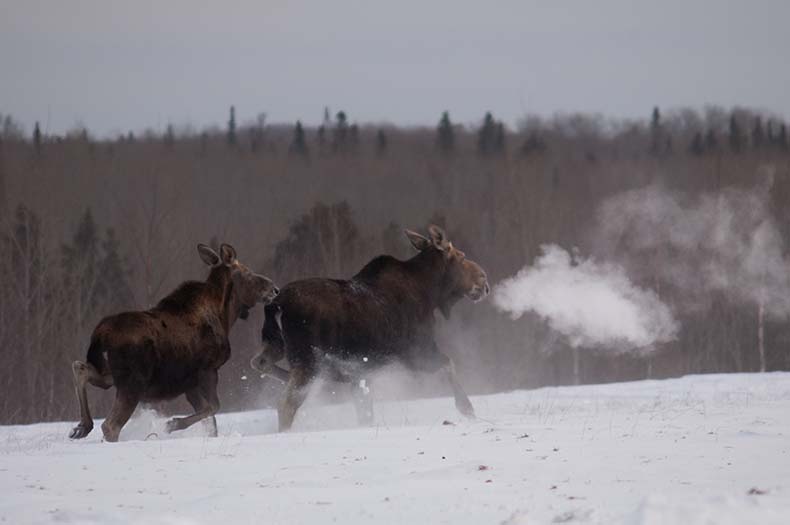
This winter’s aerial survey of Minnesota’s moose population has found about the same number of animals as found since 2012. The Minnesota Department of Natural Resources said it’s “encouraging” that the population decline which was first noticed about 10 years ago has leveled off, but scientists see no signs of a recovering or growing number of the iconic creatures.
The survey estimated there are 3,710 moose in the region. That’s statistically the same as the past few years, but less than half of the highest-ever recorded population of 8,840 in 2006.
“At this point, results do not indicate that moose are recovering in northeastern Minnesota,” said Glenn DelGiudice, DNR moose project leader. “While it is encouraging to see that the decline in the population since 2012 has not been as steep, the apparent stability does not allow us to forecast the direction of the population’s trajectory into the future.”
Survival of calves and healthy adults remains a critical factor. The survival rate of GPS-collared moose in Minnesota has been 85 to 88 percent from 2014 to 2016, but it is slightly higher than the average of 81 percent between 2002 and 2008.
The Boundary Waters Canoe Area Wilderness hosted 12 survey sections that were considered “high density” for moose. Only about six such zones exist outside the wilderness, pointing to the protected area as a key refuge for moose.
To explain the moose population decline since 2006, the DNR points to a combination of infections, parasites and other health issues which kill moose and make them vulnerable to wolves. The animals have thick coats to stay warm in winter, but northern Minnesota’s rapidly warming winters due to climate change are a contributing factor. Scientists have found that moose eat less in winter when the temperature is above 23 degrees, and their nutrition and health suffers.
As Alissa Johnson recently reported, northern Minnesota’s winters have been warming ten times faster than its summers—with the average winter temperature rising one degree Fahrenheit per decade. Minnesota’s winters are warming faster than any other region of the country, with average temperatures increasing by up to 7.5 degrees since 1970.
Combined with the growing number of whitetail deer, which transmit a harmful brainworm and other parasites, and contribute to high numbers of wolves, northern Minnesota has become much less habitable for moose.

